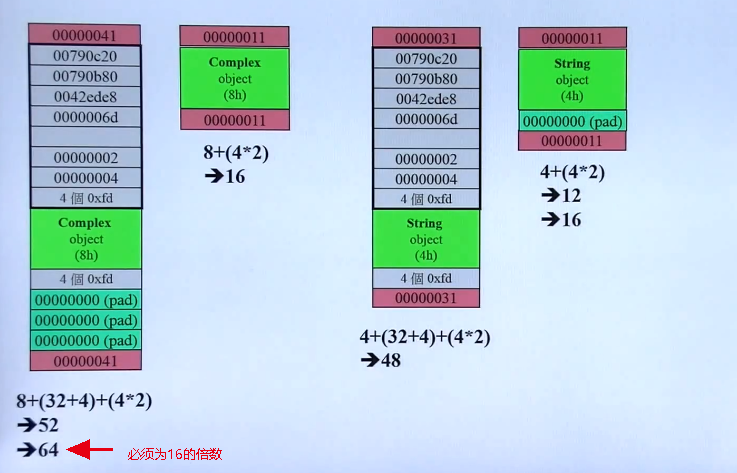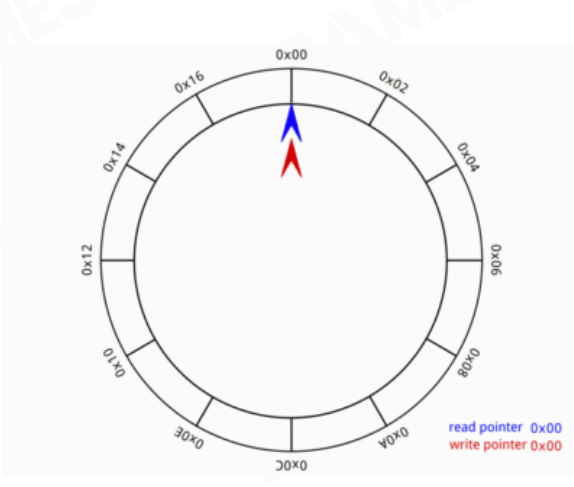1. 支持Long long类型
一般来说编译器支持int 为4个字节,double占用8个字节(2个字), 在C++11中加入了更高精度的long long类型,long double类型,以3、4个字表示(16个字节)
2. 列表初始化或赋值
说是列表初始化,其实本质上就是一种由花括号(类似于列表)的方式来初始变量。
int test_a = {1 };test_a = {2 }; int test_b{2 };vector<int > test_c = {1 ,3 ,4 } map<string, string> authors = {{"1" , "a" },{"2" , "b" },{"3" , "c" }}; pair<string, string> author = {"1" , "a" };
但是这种也有限制,不可以将高精度用于低精度初始化,如下初始化会失败,由于编译对于数值的保护:
long double ld = 3.1415926536 ;int a{ld}, b = {ld}; int a (ld) , b vector<int > *test_d = new vector<int >{1 ,2 ,3 ,4 ,5 };
3. nullptr常量
C++11之前,常在需要设置为空指针时用如下两种写法:
int *p = 0 ;int *p = NULL ;
C++11提出nullptr常量,并且推荐开发者都使用这种方式设置空指针。
这样设计也有原因,比如0常常与数值0混淆,而且对于为0的数值变量是无法与指针赋值的,当然这也很奇怪。
4.constexpr
变量
const int THREADHOLD = 3 ;const int THREADHOLD_ADD_ONE = THREADHOLD + 1 ;
C++11中加入constexpr 支持常量表达式:
constexpr int THREADHOLD = 3 ;constexpr int THREADHOLD_ADD_ONE = THREADHOLD + 1 ;
特别的constexpr不可以为让一个非constexpr的函数赋值! 除非也定义那个函数为constexpr
constexpr int new_sz () return 42 ;}
5.类型别名声明
一般方法是使用typedef的方式:
现在支持一种using语法,接=后为所想指的原类型:
6. auto类型指示符
可以为一些难以确定的类型使用auto来替代类型名,常用于迭代器的类型,也可以为一些确定的表达式类型声明使用auto.
int a, b =5 auto c = a + b;int ia[3 ][4 ];int (*ip)[4 ] = ia; for (auto p = ia; p != ia + 3 ; ++p){ for (auto q = *p; q != *p + 4 ; ++q) cout << *q << ' ' ; cout << endl; } auto p = new auto (a);
7.decltype类型指示符
可以取一个表达式或者变量名的类型
const int i, &j = i;decltype (i) a = 5 ; decltype (j) b = a;
注意的两点:
decltype其中再加多一层括号时,必须返回的是左值,即引用的结果:
int i = 5 ;decltype ((i)) a = i;
当decltype应用于解引用指针时,返回的是一个左值引用的结果,与例1类似,所以必须得初始化
8. 类内初始化
可以为类的成员直接写上初始值。简化了构造函数的工作
class A { public :..... int a = 1 ; int b{ 2 }; }; A (int i, int j) :a (1 ),b (2 ) {};A (int i, int j){};
9. range base iterator
使用冒号解开容器,可以使用引用符来接收参数,这样就可以实现改值操作。
list<int > m = {1 ,32 ,4 ,5 ,4 ,6 }; for (auto & i : m){cout << i++ << endl; } for (auto i : m){cout << i << endl; }
10.vector对象的vector
旧的标准中 右尖括号必须隔开以防与>>右移运算符冲突
C++11后,可以不用这个空格限制。
11.容器的cbegin和cend函数
为了能得到一个const修饰的迭代器某项的值,使用cbegin和cend替代begin和end
vector<int > v; const vector<int > cv;auto it1 = v.begin ();auto it2 = cv.begin ();auto it3 = v.cbegin ();
12. begin与end函数
直接取得一个数组的头和尾:
int test_arry[] = {1 ,2 ,3 ,90 , 5 ,6 };int *test_arry_begin_ptr = begin (test_arry);int *test_arry_end_ptr = end (test_arry);while ((test_arry_begin_ptr != test_arry_end_ptr) && (*test_arry_begin_ptr < 6 )){ test_arry_begin_ptr ++; } cout << "Find weird num:" << *test_arry_begin_ptr <<endl; vector<int >::const_iterator test_arry_begin_ptr = begin (test_v_a); auto test_arry_end_ptr = end (test_v_a);
13.除法的舍入规则
C++11所有的商都一律向0取整
除法运算,直接切除小数部分,而是由具体情况而定,(-m)/n 等于 m/(-n) 等于 -(m/n)
取余运算来说,只匹配m的符号,分子n的值一律按正的值处理: m % (-n) 等于m%n , (-m) % n 等于 -(m % n), -m % -n 等于-(m % n)
21 / 8 2 -21 % 8 -5 ==> -(21 % 8 )21 % -8 5 ==> 21 % 8 -21 % -8 -5 ==> -(21 % 8 )
14.sizeof用在类成员
sizeof输出常量表达式,所以可以自然放到右值使用。
class TestClass {public : int m; } TestClass tc; sizeof (TestClass) sizeof tc;
但对vector或string使用时,只返回该类型固定部分大小,即与括号返回的结果一样,而非包含元素大小。
15.标准库initializer_list类
与vector用法类似,本质的实现上也采用模板参数的方法,这样适配了各种类型。
初始化时,采用复制的方式把初始值拷贝出来
拷贝或赋值运算时,取的引用,与副本共享元素
同样内置了迭代器
int il_i1 = 1 ;int il_i2 = 2 ;int il_i3 = 3 ;initializer_list<int > il_a {il_i1, il_i2, il_i3}; initializer_list<int > il_b (il_a) ;for (auto il_iter = il_a.begin (); il_iter != il_a.end (); ++il_iter){cout << *il_iter << endl; }
16.列表初始化返回
与列表初始化相对应的,用花括号放数同类型数据可以初始化一个对象或者列表,也可以当作函数返回值使用!
int Test4 () return {1 }; } vector<int > Test5 () { return {1 ,3 ,4 ,2 }; }
17.尾置返回类型
返回类型写成auto,使用箭头符告诉具体的返回类型:
auto Test5 () -> vector<int > return {1 ,3 ,4 ,2 }; }
18.=default生成默认构造函数
在C++11中加入=default可以在函数内部使用Inline的方式,外部非inline方式指定此构造函数使用默认的构造。
struct Sales_data { Sales_data () = default ; }
19. 委托构造函数
定义一个构造函数,其他构造函数可以委托其执行一些逻辑,注意这个执行是优先的,然后才自己的构造函数体内的部分
class Sales_data {private : string booksNo; unsigned units_sold; double revenue; public : Sales_data (string s, unsigned cnt, double price):booksNo (s), units_sold (cnt), revenue (price){ cout << "RUN: Sales_data(string s, unsigned cnt, double price):booksNo(s), units_sold(cnt), revenue(price)" << endl; } Sales_data (): Sales_data ("xxx" , 1 , 0.1 ){ cout << "RUN: Sales_data(): Sales_data(\"xxx\", 1, 0.1)" << endl; } Sales_data (string s): Sales_data (s, 1 , 0.1 ){ cout << "RUN: Sales_data(string s): Sales_data(s, 1, 0.1)" << endl; } }; void Test6 () Sales_data sd1; Sales_data sd2 ("book1" ) ; Sales_data sd3 ("book1" , 1 ,3 ) ;}
20.constexpr的构造函数
为构造函数添加constexpr关键字,可以让其生成constexpr的对象,可以定义为default,也可以在满足构造函数和constexpr的前提下定义如下规则的函数:
必须初始化所有的数据成员,使用初始值的方式或者constexpr构造或constexpr表达式
class Debug {private : bool hw; bool io; bool other; public : constexpr Debug (bool b= true ) :hw(true), io(b), other(false){ constexpr Debug (bool h, bool i, bool o) :hw(h), io(i), other(o){ }
21.string对象处理文件名
文件流对象在旧的标准中,必须使用C风格字符串,现在也能支持直接传string了:
std::string ifile = "test.txt" ; ifstream in (ifile) ;
22. array和forward_list容器
foward_list是单向链表的容器,插入删除性能很快,但不支持size函数。array是固定数组大小的容器,快速随机访问,但不能增删元素。
std::array<double , 10> values {0.5 ,1.0 ,1.5 ,,2.0 }; int a[] = { 1 ,2 ,3 ,4 ,5 };std::forward_list<int > values (a, a+5 ) ;std::array<int , 5>arr{ 11 ,12 ,13 ,14 ,15 }; std::forward_list<int >values (arr.begin ()+2 , arr.end ()); #include <iostream> #include <forward_list> using namespace std;int main () std::forward_list<int > values{1 ,2 ,3 }; values.emplace_front (4 ); values.emplace_after (values.before_begin (), 5 ); values.reverse (); for (auto it = values.begin (); it != values.end (); ++it) { cout << *it << " " ; } return 0 ; }
23. swap函数
swap对元素不进行拷贝,删除,插入操作,因此只有常数时间的算法复杂度。
namespace std { template <typename T> void swap (T &a,T &b) { T temp (a) ; a = b; b = temp; } }
c++11后有了移动构造函数和移动运算符,优化后的版本,同时支持为非成员函数:
template <typename T>void swap (T& a,T&b) T temp (std::move(a)) ; a = std::move (b); b = std::move (temp); }
24. 容器insert成员的返回类型
C++11中容器insert将返回第一个新加入元素的迭代器
list<string> lst; auto iter = lst.begin ();while (cin >> word) iter = lst.insert (iter, word);
25. emplace, emplace_front, emplace_back
新增的三个成员。 emplace对应insert,emplace_front对应push_front, emplace_back对应push_back
c.emplace_back ("a" , 1 , 2 ); c.push_back (X ("a" , 1 , 2 ));
26. 容器shrink_to_fit()
对于容器vector, string, deque。由于是会根据大小进行动态分配大小,当分配大小不足时,会再次分配一块内存,使用shrink_to_fit()可以让多分配出的内存退回。
但不能保证都能正常退回?有些环境下shrink_to_fit()可能无效?
vector<int > ivec; cout << ivec.size () << "," << ivec.capacity () << endl; for (size_t ix = 0 ; ix < 24 ; ix ++) ivec.push_back (1 ); cout << ivec.size () << "," << ivec.capacity () << endl; ivec.shrink_to_fit (); cout << ivec.size () << "," << ivec.capacity () << endl; ivec.reserve (60 ); cout << ivec.size () << "," << ivec.capacity () << endl; for (size_t ix = 0 ; ix < 50 ; ix ++)ivec.push_back (1 ); cout << ivec.size () << "," << ivec.capacity () << endl; ivec.shrink_to_fit (); cout << ivec.size () << "," << ivec.capacity () << endl;
27. string与数值相互转换
新加入数值与string相互转换的方法
int pi = 42 ;string str1 = to_string (pi); string str = "3.24" ; double dv = stod (str);cout << pi << dv << endl;
28. lambda表达式
使用如下格式可以定义一个lambda表达式,本质上是一个inline的未命名函数,表示一块可以执行的代码块。
capture list: 表示捕获在此lambda之前声明的变量,用,隔开,可以使用= 表示对值进行捕获,用&表示对引用进行捕获。
mutable: 表示用来说用是否可以修改捕获的变量, 只对值数据有效,类似于对值变量前加一个引用符
-> : 使用尾置返回类型,指明此Lambda的返回类型
int sz = 3 ;ostream &os = cout; vector<string> str_list = {"c" , "abc" , "abcdefg" ,"eedfg" }; auto iter = find_if (str_list.begin (), str_list.end (), [&, sz](string &s){ os << s << endl; return s.size () >= sz;});cout << *iter << endl;
29. 标准库 bind
给定函数,除了使用直接调用的方式,也可以使用bind得到一个函数绑定器,用这个绑定器来调用。
有这个绑定器,结合标准库placeholders空间提供的占位符,以重新更改需要传入的参数顺序。
对于传递的变量是引用类型,,要使用ref()函数包裹一下,如果是const 引用,则用cref()函数包裹。注意这只是在传递变量的情况,如果使用Placeholders,则不需要加这个函数包裹
ostream &os = cout; int sz = 3 ;auto compare_func = [sz](ostream &os, string &s, int hack, bool is_bigger){ os << s << ", with " << hack << endl; if (is_bigger) return s.size () >= sz; else return s.size () < sz; }; auto compare_big_func = std::bind (compare_func, ref (os), placeholders::_1, 0 , true );auto compare_small_func = std::bind (compare_func, ref (os), placeholders::_1, 0 , false );vector<string> str_list = {"c" , "abc" , "abcdefg" ,"eedfg" }; auto iter = find_if (str_list.begin (), str_list.end (), compare_big_func);cout << *iter << endl; auto iter2 = find_if (str_list.begin (), str_list.end (), compare_small_func);cout << *iter2 << endl;
30. 无序容器
unordered_map, unordered_set,同时支持重复关键字的版本是 unordered_multimap, unordered_multiset
std::unordered_multiset<std::string> umset; umset.emplace ("http://c.biancheng.net/java/" ); umset.emplace ("http://c.biancheng.net/c/" ); umset.emplace ("http://c.biancheng.net/python/" ); umset.emplace ("http://c.biancheng.net/c/" ); cout << "umset size = " << umset.size () << endl; for (auto iter = umset.begin (); iter != umset.end (); ++iter) {cout << *iter << endl; }
31. 可变参数模板
语法上支持…,可以直接解包
void print () } template <typename T, typename ... Args>void print (const T& t, const Args&... args) cout << t << endl; print (args...); } template <typename T>using Lst = list<T, allocator<T>>;template <typename T>ostream & print (ostream& os, const T& t) os << t << endl; return os; } template <typename T, typename ... Args>ostream & print (ostream& os, const T& t, const Args&... args) os << t << endl; return print (os, args...); }
32. 智能指针
shared_ptr
std::shared_ptr<int > p3 (new int (10 )) ;std::shared_ptr<int > p3 = std::make_shared <int >(10 ); std::shared_ptr<int > p4 (p3) ;std::shared_ptr<int > p5 (std::move(p4)) ; void deleteInt (int *p) delete []p; } std::shared_ptr<int > p7 (new int [10 ], deleteInt) ;shared_ptr<int > p1 (new int (10 )) ;shared_ptr<int > p2 (p1) ;shared_ptr<int > p3 (p1) ;cout << *p2 << endl; *p1 = 25 ; p1.reset (new int (80 )); p1.reset (); if (p1)cout << "p1 不为空:" << *p1 <<endl; else cout << "p1 为空" << endl; cout << *p2 << endl; cout << p2.use_count () << endl;
unique_ptr
unique_ptr<int > P1 (new int (5 )) ;cout << *P1 << endl; unique_ptr<int > P2 (move(P1)) ;auto printPtr = [](string name, unique_ptr<int > &p){ if (p) cout << "*" << name << ":" << *p << endl; else cout << "*" << name << " is NULL" << endl; }; auto printPtr1 = bind (printPtr, "P1" , placeholders::_1);auto printPtr2 = bind (printPtr, "P2" , placeholders::_1);auto printPtr3 = bind (printPtr, "P3" , placeholders::_1);unique_ptr<int > P1 (new int (5 )) ;printPtr1 (P1);unique_ptr<int > P2 (move(P1)) ;printPtr1 (P1);printPtr2 (P2);unique_ptr<int > P3 (P2.release()) ;printPtr1 (P1);printPtr2 (P2);printPtr3 (P3);P1.reset (P3.release ()); printPtr1 (P1);printPtr2 (P2);printPtr3 (P3);
weak_ptr
if (shared_ptr<int > wp = p2.lock ()){ cout << *wp << endl; }
33. 动态分配
可以使用new 在不指定默认值的情况下,申请一块空间:
动态数组与普通数组的区别是,动态数组得到的是一指向数组元素类型的指针。由于是指针指向数组元素类型,而不是数组,所以不能使用begin和end。也不能使用auto.
int *p = new int [42 ];int p2[] = {1 ,2 ,3 };int *p2_begin = begin (p2);int *p2_end = end (p2);
使用列表初始化结合动态数组:
int *pia = new int [10 ]{0 ,1 ,2 ,3 };
动态分配一个空数组是合法的:
char arr[0 ];char *cp = new char [0 ];
34. allocator
标准库的allocator实际上是每个标准库容器类的模板的第二个默认参数。
T*allocate(size_t n);分配足够的存储空间来存储T的n个实例,并返回指向它的指针
void deallocate(T* p, size_t n) 释放分配的内存
void construct(T* p, Args … args);使用p指向的args参数构造一个对象,该接口在C++20中已被移除。本质上就是对传入的类型,原地调用构造和new运算符
void destroy(T* p);调用p指向的对象的析构函数,该接口在C++20中已被移除。本质上是对对象原地调用析构。
allocator<string> alloc; int n{ 5 };string * p = alloc.allocate (n); auto q = p;alloc.construct (q++, "first" ); alloc.construct (q++, 10 , 'c' ); alloc.construct (q, "hi" ); cout << *p << endl; cout << *q << endl; cout << p[0 ] << endl; cout << p[1 ] << endl; cout << p[2 ] << endl; while (q != p) {alloc.destroy (--q); } alloc.deallocate (p, n);
35. =default/ = delete
= default标识无成员参数的构造函数,意为要求编译器显式生成一个合成的版本。 =delete则用于阻止对象的拷贝构造操作。
class X { public : X () = default ; X& operator =(const X &) = delete ; X (int i) { a = i; } private : int a; };
36.右值引用
按照C++的左值长久,右值短暂的特点,右值往往表示的一个值的特征,而左值表示对象的句柄。使用&&符号可以指定一个对象为右值:
int a = 24 ;int &&r = a; int &&r = 43 ;int &&r = 43 + a;
int a = 20 ;int &r = a;int &r = a+ 32 ;
37. std::move
move的作用,就是把一个左值将成右值来用,但这有个后果就是左值被move执行后,将不能再使用了,只能赋值或销毁。
int &&r = 10 ;int &&rr = r;int &&rr = std::move (r);
38. 移动构造与移动赋值
与拷贝构造的定义类似,区别就是移动构造或赋值并不会对内存进行拷贝,就像是“移动”的文字本意,把原参数对象的指向进行转移,因此做为参数的对象需要使用&&标识,且被置Nullptr时需要安全的。一般也会结合noexcept标识。
MemoryBlock (MemoryBlock&& other) noexcept : _data(nullptr ) , _length(0 ) { std::cout << "In MemoryBlock(MemoryBlock&&). length = " << other._length << ". Moving resource." << std::endl; _data = other._data; _length = other._length; other._data = nullptr ; other._length = 0 ; } MemoryBlock& operator =(MemoryBlock&& other) noexcept { std::cout << "In operator=(MemoryBlock&&). length = " << other._length << "." << std::endl; if (this != &other) { delete [] _data; _data = other._data; _length = other._length; other._data = nullptr ; other._length = 0 ; } return *this ; }
39. 移动迭代器
使用标准库的make_move_iterator将普通迭代器转为移动迭代器。这样解引用将生成一个右值引用。
std::list<std::string> s{ "one" , "two" , "three" }; std::vector<std::string> v1 (s.begin(), s.end()) ; std::vector<std::string> v2 (std::make_move_iterator(s.begin()), std::make_move_iterator(s.end())) std::cout << "v1 now holds: " ; for (auto str : v1)std::cout << "\"" << str << "\" " ; std::cout << "\nv2 now holds: " ; for (auto str : v2)std::cout << "\"" << str << "\" " ; std::cout << "\noriginal list now holds: " ; for (auto str : s)std::cout << "\"" << str << "\" " ; std::cout << '\n' ; vector<unique_ptr<int >> vec; unique_ptr<int > s1 (new int (1 )) ;unique_ptr<int > s2 (new int (2 )) ;unique_ptr<int > s3 (new int (3 )) ;unique_ptr<int > s4 (new int (4 )) ;vec.push_back (std::move (s1)); vec.push_back (std::move (s2)); vec.push_back (std::move (s3)); vec.push_back (std::move (s4)); unique_ptr<int > s5 (new int (5 )) ;vector<unique_ptr<int >> des_vec; des_vec.push_back (std::move (s5)); des_vec.insert (des_vec.end (), std::make_move_iterator (vec.begin ()), std::make_move_iterator (vec.end ())); display_vector (des_vec);cout << "now, des_vec size: " << des_vec.size () << endl; cout << "now, vec size: " << vec.size () << endl; cout << "now, vec size: " << vec.size () << endl; for (int i=0 ; i<vec.size (); i++){ cout << *vec[i] << " " ; } vec.clear ();




